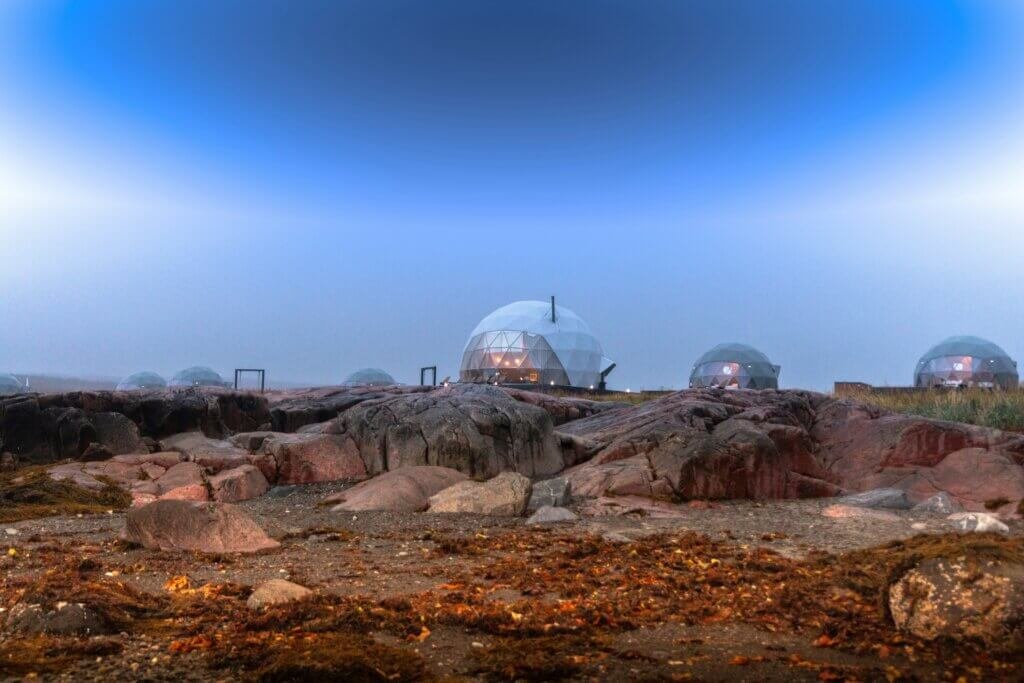Imagine yourself surrounded by nature, enjoying the luxury of a comfortable glamping experience. The gentle breeze rustles through the trees as you relax in your cozy tent, but suddenly, you hear the buzz of an unwelcome guest. Yes, bugs can be an inevitable nuisance while glamping, but fear not! In this article, we will share some of the best ways to keep bugs at bay, ensuring that your outdoor adventure remains bug-free and enjoyable. From natural repellents to clever tips and tricks, get ready to bid farewell to those pesky intruders and embrace a bug-free glamping experience like never before.

Choosing the Right Campsite
When it comes to camping, the first step in keeping bugs at bay is choosing the right campsite. Consider the location and surroundings of the campsite carefully. Look for a spot that is away from standing water, as this tends to attract mosquitoes and other insects. Instead, opt for a location with ample sunlight and a gentle breeze, as these natural elements help to deter bugs. Additionally, try to find a campsite that has protective structures, such as tree cover or natural windbreaks, which can provide some relief from insects.
Preventing Bug Entry
Once you have chosen the perfect campsite, it is important to take measures to prevent bugs from entering your living space. One effective way to do this is by using mesh screens for windows and doors. These screens allow you to enjoy fresh air while keeping unwanted insects out. Additionally, make sure to seal any cracks or gaps in your tent or cabin to prevent bugs from finding a way inside. Pay close attention to areas where the fabric may have worn thin or where stitching may be loose.
Of course, the most basic rule of bug prevention is to keep the entrance closed. Whether you are entering or exiting your tent or cabin, make sure to always zip up or close the door behind you. It may seem like a small detail, but leaving the entrance open even for a moment can allow bugs to sneak inside.
Using Natural Bug Repellents
For those who prefer natural alternatives to chemical bug repellents, there are several options available. Essential oils, such as citronella, lavender, and eucalyptus, are popular choices. These oils can be applied directly to the skin or mixed with a carrier oil, such as coconut or jojoba oil. They not only repel bugs but also have a pleasant scent.
Another natural bug repellent option is citronella candles and torches. The strong aroma of citronella acts as a deterrent for mosquitoes and other insects. These can be placed around your campsite or near seating areas to create a bug-free zone. Additionally, consider planting herbs and plants with bug-repellent properties, such as lemongrass, mint, and marigolds, around your campsite to naturally repel bugs.
Wearable Insect Repellents
In addition to using natural bug repellents around your campsite, it is important to protect yourself from bug bites as well. One option is to wear bug repellent clothing. These garments are specially treated with insect-repellent chemicals that provide long-lasting protection. They are available in various styles, including shirts, pants, and hats. Wearing bug repellent clothing can greatly reduce the risk of bug bites, especially in areas where bugs are particularly active.
Bug spray or wipes are another popular option for personal insect repellent. Look for bug sprays that contain effective ingredients such as DEET or picaridin. These repellents should be applied to exposed skin, following the instructions on the product label. Alternatively, bug repellent wipes are a convenient option for on-the-go protection. Keep a few in your backpack or pocket for quick and easy application when needed.
For those who prefer a more stylish approach to bug protection, bug repellent bracelets are a great choice. These wearable bands are infused with bug-repellent chemicals and can be worn on your wrist or ankle. They provide a continuous barrier against bugs, making them ideal for outdoor activities like camping.

Maintaining a Clean Campsite
Keeping your campsite clean and free of clutter is an important step in preventing bugs from lingering around. Dispose of food waste properly by sealing it in airtight bags or containers and placing it in a designated trash area away from your living space. This helps to eliminate any food sources that may attract insects. Additionally, make sure to clean up spills and crumbs promptly.
Regularly sweeping or brushing off surfaces, such as picnic tables and chairs, can also help to prevent bugs from taking up residence. Pay special attention to areas where food is consumed, as even the smallest crumbs can attract ants and other pests. Maintaining a clean campsite not only keeps bugs away but also promotes a more enjoyable and sanitary environment for everyone.
Protecting Sleeping Areas
When it comes to bugs, one area of particular concern is the sleeping area. To ensure a restful and bug-free night’s sleep, there are several steps you can take. Firstly, consider using bug-proof sleeping bags or nettings. These specially designed sleeping bags have fine mesh netting incorporated into their construction, which prevents bugs from entering while still allowing for airflow. Alternatively, if you are sleeping in a cabin or tent with separate sleeping areas, consider using mosquito nets or bed canopies for added protection.
Before settling in for the night, it is important to inspect your bedding for bugs. Check the seams and folds of your sleeping bag or bedding for any signs of insect activity. If you do find any bugs, remove them immediately and treat the area with a bug repellent spray to ensure they do not return. Additionally, make sure to shake out your sleeping bag or bedding before use to dislodge any hidden pests.
Elevating your sleeping areas can also help to prevent bugs from reaching you while you sleep. Use a cot or raised platform for your sleeping mat or air mattress to create a barrier between you and the ground. This not only helps to keep bugs at bay but also provides added comfort and insulation.

Creating Bug-Free Zones
If you want to enjoy bug-free relaxation areas within your campsite, consider setting up bug screens or tents. These can be erected over seating areas or picnic tables to create a designated bug-free zone. Bug screens are typically lightweight and portable, making them easy to transport and set up. Alternatively, you can use bug zappers or traps to attract and eliminate bugs in specific areas. These devices emit UV light or use bait to lure insects, effectively reducing their numbers around your campsite. Additionally, lighting citronella tiki torches around your campsite can help to deter bugs, as they dislike the strong scent of citronella.
Avoid Attracting Bugs
In addition to taking preventative measures, it is important to minimize factors that attract bugs to your campsite. One way to do this is by minimizing scent. Avoid using scented personal care products, as the strong fragrances can attract insects. Opt for unscented options instead, or choose products that have bug-repellent properties.
When it comes to lighting, keep it dimmed or use red-tinted lights. Bright lights attract bugs, especially flying insects like moths and mosquitoes. By keeping the lights dimmed, you can reduce the number of bugs flocking to your campsite. Red-tinted lights are another option, as they are less attractive to insects while still providing sufficient illumination.
Lastly, consider your choice of clothing. Avoid wearing bright colors and floral patterns, as these can attract bugs, especially stinging insects like bees and wasps. Instead, opt for light-colored and neutral-toned clothing, which is less likely to draw attention from insects.

Dealing with Mosquitoes
Mosquitoes are perhaps the most notorious bugs that campers have to deal with. To keep these blood-sucking pests at bay, it is important to take extra precautions. First and foremost, eliminate any standing water around your campsite, as mosquitoes breed in still water. Empty any containers or buckets that may collect water, and ensure that your campsite is free of any puddles or stagnant areas.
Using mosquito nets or bed canopies is an effective way to protect yourself while sleeping. These nets create a physical barrier between you and the mosquitoes, preventing bites and providing peace of mind. Ensure that the nets are tightly sealed and free from any holes or gaps.
For added protection throughout your campsite, consider burning mosquito-repelling incense. These incense sticks or coils contain natural ingredients that mosquitoes find repulsive. Place them in strategic areas around your campsite, such as near seating areas or entrances, to create a bug-free environment.
Knowing Local Bug Patterns
Lastly, gaining knowledge about the local bug patterns can greatly help in your efforts to keep bugs at bay while camping. Research the bug seasons and habitats in the area you plan to camp in. Some insects may be more active during certain times of the year or in specific environments. By being aware of these patterns, you can better prepare and take appropriate measures to prevent bug encounters.
Additionally, take the time to learn about the common pests in the area. Knowing which bugs are prevalent in the region can help you identify them and understand their habits. For example, if you are camping in an area known for ticks, you can take extra precautions to check for ticks and wear appropriate clothing to prevent bites.
Seeking local advice or recommendations can also be beneficial. Locals or park rangers are often knowledgeable about the bugs in the area and can provide valuable insights and tips for bug prevention. They may be able to suggest specific products or techniques that work well in that particular location.
By following these tips and taking proactive measures, you can ensure a bug-free and enjoyable camping experience. Remember to choose your campsite wisely, take steps to prevent bug entry, utilize natural bug repellents, protect yourself with wearable insect repellents, maintain a clean campsite, and create bug-free zones. Additionally, be mindful of factors that attract bugs, deal with mosquitoes specifically, and educate yourself about local bug patterns. With these strategies in place, you can keep bugs at bay while glamping and fully enjoy your outdoor adventure.



